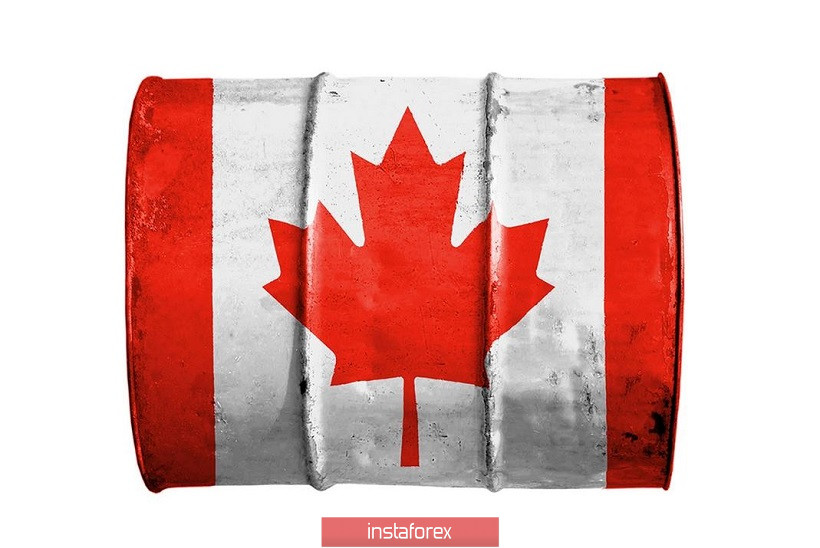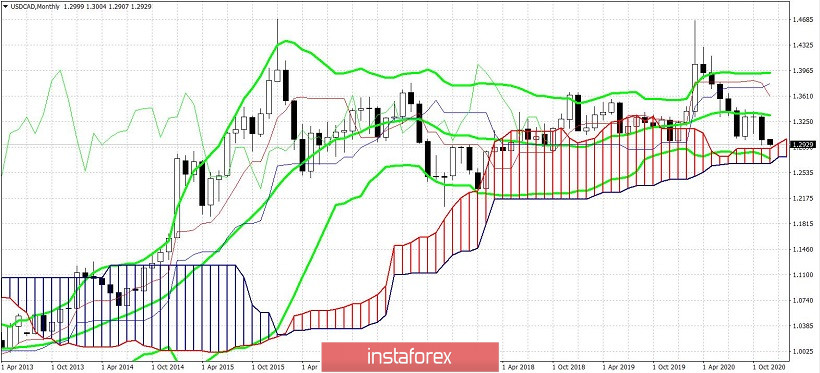CAD has been appreciating for the third week in a row against its American rival. In mid-November, USD/CAD was hovering at around 1.3130. At present, the currency pair is approaching 1.29. The greenback's weakness is not the only reason behind the rapid downtrend. The Canadian dollar is gaining ground amid an economic recovery in Canada, the bullish trend in the oil market, and optimism about Joe Biden's victory in the presidential election. All these factors create a positive fundamental picture that pushes USD/CAD to fresh lows. The bears have already pushed the pair to a two-year low with prospects for a further decline. If events in the nearest days support the loonie, the pair will be able to sink below 1.2900 keeping the bearish momentum.
Commodity currencies including the Canadian dollar is in suspense, awaiting OPEC+ decision on extension of historic production cuts. The cartel was supposed to make the verdict before December 1. Eventually, OPEC and its allies decided to postpone the solution until December 3, i.e. until today. So, amid uncertainty oil prices are drifting down, though holding at rather high levels compared to autumn prices.

Some experts believe that the cartel will extend the pact under the current terms at least until Q2 2021. Saudi Arabia, the OPEC de facto leader, advocates for the extension. At the same time, some large oil producers are willing to scale up oil output with a view to benefiting from the ongoing oil rally. If the members agree in favor of the pact extension, Brent crude could test the psychological level of $50 a barrel. Besides, WTI could rise to a range of $46-48 a barrel. Such dynamics will provide the Canadian dollar with support.
When it comes to the economic calendar, the consensus suggests upbeat Canada's nonfarm payrolls which are due tomorrow. The first positive factor is that the unemployment rate could have declined to 8.8% in November, carrying on with the downtrend for the 5th month straight. Second, the Canadian labor market could have added 28,000 last month. On the one hand, this employment growth is much lower than in October when the nonfarm payrolls logged 83,000 jobs. On the other hand, employment growth in November is ensured mainly by full-time jobs, part-time jobs increased to a lesser extent. So, the flash estimates are rather optimistic. In other words, the government report could step up pressure on USD/CAD in case the data will be bullish for the Canadian dollar.
Importantly, according to the GDP report released on Tuesday, Canada's economy expanded 40% in Q2 2020 following a 38% slump in Q2. Previously, the market got to know robust retail sales data defying pessimistic expectations.
Now, a few words about the impact of Joe Biden. For your reference, the US, Mexico, and Canada signed a new trade agreement (USMCA) in the early 2020 which replaced the North American Free Trade Agreement (NAFTA). The new deal was made on revised terms which were more beneficial for Americans. Donald Trump created the election slogan America above all else. However, under Trump's presidency, this slogan evolved in the rhetoric America against all, which entailed grave consequences. The trade talks were in progress for two years against the background of threats from Donald Trump to intensify trade barriers between the US and its trade partners. Uncertainty in trade prospects was mirrored on the hawkish stance of the Bank of Canada and the domestic investment climate. As a result, Canada was forced to make serious concessions, especially in the field of the dairy farming. Nevertheless, the US and Canada came to the common denominator in multi-month trade talks. Interestingly, Donald Trump threatened Canada to impose new steel and aluminum tariffs. In this context, President-elect Biden is seen as benign for further trade relations. He will hardly resume or escalate the trade war, though he supports the protectionist stance Buy American.

Bearing all above-said in mind, USD/CAD maintains powerful bearish momentum. At present, the price is trading at the lower border of the Bollinger Bands on all time frames, except MN. Therefore, the key support is seen at 1.2800 which is the lower border of the Bollinger Bands coinciding with the lower border of the Kumo cloud on MN. Be aware that this downwards target is hard to achieve. So, it is possible to consider the intermediate target of 1.2850.





















